When it comes to diamonds, color is an essential characteristic that influences their beauty and value. The color of a diamond refers to the presence or absence of any hue, with the most desirable diamonds being completely colorless. Understanding the importance of color in diamonds is crucial when selecting the perfect stone for your jewelry.
Table of Contents
H Vs I Color Diamonds: Overview
H Color Diamond
Delving into the nuance of diamond color grading, we arrive at the H grade – ranked fifth on the esteemed GIA color scale. This scale is composed of 23 grades total, underscoring the precision involved in assessing each diamond’s hue.
An H grade falls below G and above I in the spectrum of near-colorless diamonds, with minute differences resulting in subtle shifts in allure and value. To accurately discern a diamond’s exact color grade requires examination under magnification, conducted within ideal lighting conditions. Gemologists frequently reference a “master stone” as a representative example of what each distinct grade should look like.
Characteristics of H Color Diamonds:
- H color diamonds have a slightly yellow tint, which becomes more noticeable as the carat size increases.
- They are less expensive compared to higher color grade diamonds, making them a budget-friendly choice.
- H color diamonds can still appear nearly colorless when set in white gold or platinum settings.
- They provide excellent value for customers who prioritize size and overall appearance rather than focusing solely on color grade.
Pros:
- H color diamonds offer a more affordable option without compromising on overall brilliance and sparkle.
- They can be a great choice for those who want a larger carat size without breaking the bank.
- When set in the right metal setting, H color diamonds can still appear visually appealing and nearly colorless.
Cons:
- The slight yellow tint might be more noticeable in larger sizes or in certain lighting conditions.
- If you prefer a completely colorless diamond, you may want to consider a higher color grade.
Read Also: Step Cut vs Radiant Cut
I Color Diamonds
Nestled between H and J, Diamonds of I color receive the distinguished sixth highest rank on the renowned GIA Color Scale. Among near-colorless diamonds, they hold a notable third place. When viewed face-down, I Color Diamonds emanate an alluring charm and possess a subtle yet discernible tint of yellow or brown. While retaining their position among near-colorless stones, these diamonds prove to be a more pocket-friendly option when compared to higher-color-grade counterparts.
Some of the key characteristics and attributes of I color diamonds include:
- Color: The slight yellow or brown tint of I color diamonds may be evident when inspected closely, but it may not be noticeable when the diamond is set in jewelry or viewed from a distance.
- Affordability: I color diamonds are more budget-friendly compared to higher color grades, such as D to G color diamonds.
- Variety: I color diamonds can exhibit a range of hues, from a yellowish tint to a more brownish color. The actual color will vary depending on the individual diamond and its specific grading.
- Availability: I color diamonds are relatively common and can be found in a wide variety of sizes and cuts.
Pros:
- Affordability: I color diamonds offer a more budget-friendly option for those who want a larger or higher-quality diamond without the higher price tag.
- Unique warmth: The slight yellow or brown tint of I color diamonds can give them a unique and warm appearance, offering a distinctive look compared to the colorless diamonds.
- Availability: I color diamonds are widely available, making it easier to find a variety of options to suit different preferences and styles.
Cons:
- Visible tint: While the yellow or brown tint of I color diamonds may not be noticeable to the naked eye, it can become more apparent in larger diamonds or in certain lighting conditions.
- Lower resale value: I color diamonds typically have a lower resale value compared to higher color grades, so it’s important to consider long-term investment potential if that is a factor.
- Preference for higher color grades: Some individuals may have a personal preference for colorless or near-colorless diamonds and may find the slight tint of I color diamonds less desirable.
H Vs I Color Diamonds: Differences
Visible Yellow
The essential distinction between H and I color diamonds is the detectable yellow tinge, with H diamonds featuring little to no yellow hue and consequently presenting a higher grade. Upon comparison on the color scale, these grades may appear close in proximity yet vary drastically when observed together.
This minute variation is present throughout the scale, whether one progresses from F to G or from I to J. The prime attribute of H diamonds lies in their diminished visible yellow tint when viewed solo, rendering them a favored pick for an engagement ring compared to I diamonds.
As opposed to concentrating solely on a certain grade, most buyers prioritize picking a diamond that appears colorless when seen unaided while also avoiding the extra charges connected with higher grades.
Price
When all other factors are held constant, diamond buyers generally select gems with high gradings in the four Cs: color, cut, carat, and clarity. Even a slight progression in color can result in considerable cost increments of hundreds of dollars; every upgrade or downgrade on the hue spectrum usually results in around 10-20% variations in price.
Notably, the transition from near-colorless to colorless diamonds typically leads to larger outlays. To explore this association between H and I hued diamonds, our study investigated loose stones sourced from James Allen consisting of the following attributes:
Carat: 0.90
Cut: Excellent
Clarity: VVS2
The findings revealed that H-toned gems had an average cost of $5,648 with a range spanning from $5,290 to $6,310 while I-hued diamonds displayed an average of $5,005 between $4,570 and $5,630; amounting to a remarkable 13 percent monetary disparity of $643.
Discerning any discrepancy between these two is frequently difficult for the untrained eye but the savings potential is evident and prodigious; money saved could be channeled towards buying a larger diamond or improving its cut or setting quality.
Shapes
Fancy-cut diamonds offer a broad variety of shapes, every one differentiating itself from the archetypal round brilliants. Specific shapes to consider are Princess, Marquise, Oval, Emerald and Asscher.
Every fancy cut features its own set of advantages and disadvantages that are contingent upon the pattern and design of its facets; influencing overall aesthetic quality and light performance alike. For instance, princess and marquise cuts with their brilliant-style facets can rival the luminous show of traditional rounds while step-cut facets characterized by parallel lines strike a warm glow in diamonds, such as emeralds – thus making them perfect for halo or pave settings to amplify their beauty even further.
In general, fancy shapes tend to be less efficient at camouflaging color than round cut diamonds; hence I color stones might not showcase the appearance of being colorless, when crafted in certain fancy shapes.
Trends and styles for H and I color diamond jewelry
- Vintage-inspired designs: H and I color diamonds can beautifully complement vintage-style settings. Art deco designs with intricate detailing and milgrain accents can enhance the warmth of these diamonds.
- Halo designs: Halo settings featuring a central H or I color diamond surrounded by smaller colorless diamonds create a stunning contrast that highlights the center stone’s unique hue.
- Three-stone engagements rings: Three-stone settings with an H or I color diamond flanked by colorless diamonds on either side can create a captivating and sophisticated look.
- Mixed metals: H and I color diamonds can showcase their warmth when set in a combination of yellow and rose gold or even platinum, adding an extra touch of uniqueness to the piece.
Remember, the beauty of a diamond is subjective, and H and I color diamonds offer an affordable option that can still sparkle and captivate.
Choosing Between H And I Color Diamonds
Making the choice between H and I color diamonds requires a thorough comprehension of how the subtle difference in color can impact their radiance when set in jewelry.
Opt for an H Color Diamond if: The diamond possesses a fancy shape, as such cuts may better mask the color than round diamonds. You aim to avoid the premiums that come with D, E, and F diamonds, thus making H a more economical option.
After inspecting the diamond either in person or through high-resolution photos online, you perceive it as being nearly colorless to the naked eye. The diamond is over two carats in weight, as larger stones can showcase their fire and brilliance more effectively, diminishing the effect of slight hue discrepancies.
Consider I Color Diamonds if: You mull over selecting a round cut diamond that weighs less than two carats, as its shape can conceal slight tints better. The accents on the setting did not receive colorless grades; hence I colored diamonds can complement these elements excellently. You seek to employ cost savings towards obtaining a higher cut or clarity grade which would significantly enhance the diamond’s appeal and shimmer.
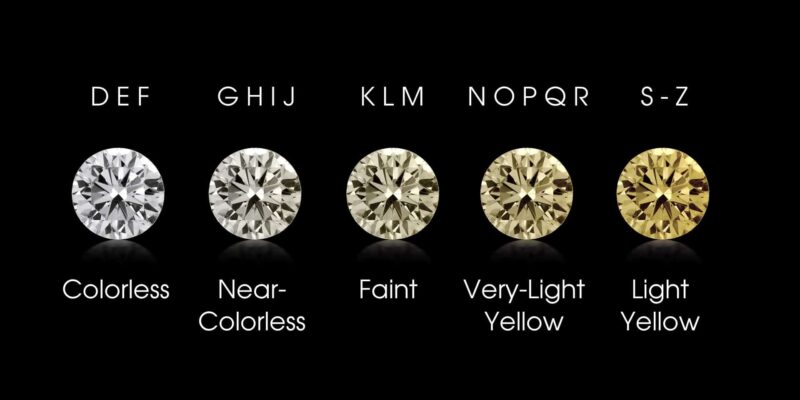
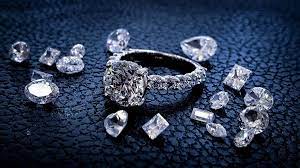
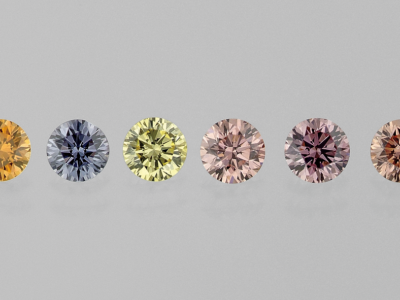
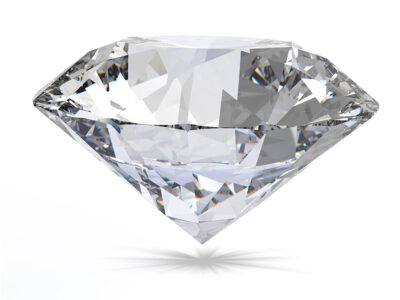

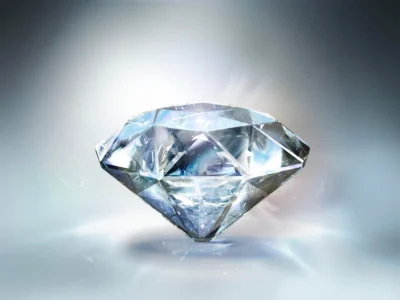
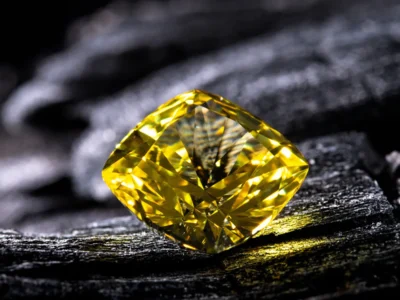
Comments